Your Position:
- Home
- Products
- Polyethylene pipe with sub-duct
- Polyethylene COD pipe 7-channel 110
Your Position:
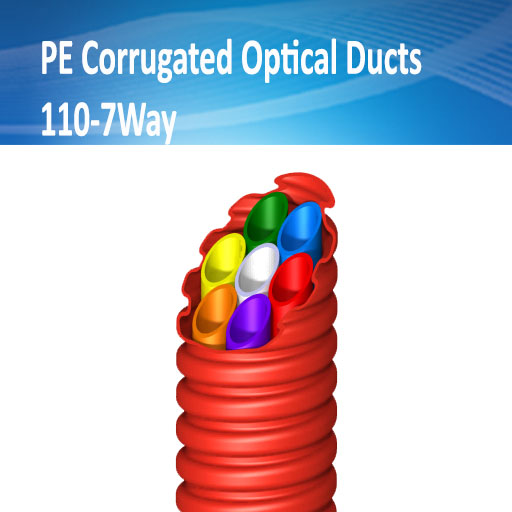
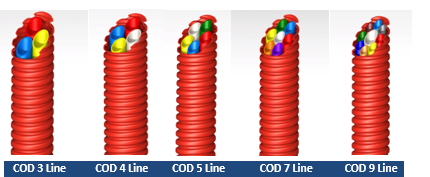

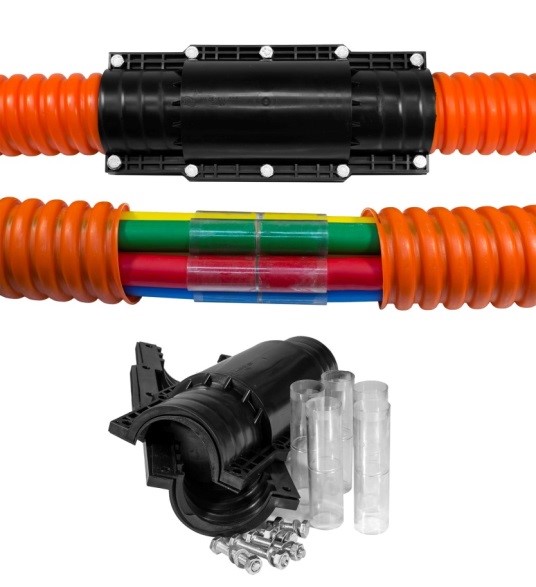
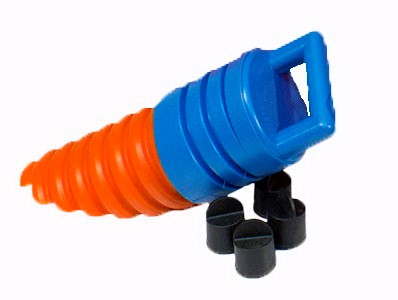 End cap for COD pipe:
1. Facilitates pipe laying in the soil: after trenching and at the start of the pipe-laying stage, this end cap can be used when pulling the pipe.
2. At the end of the work, it prevents insects, dust, foreign objects, and keeps the pipe clean for fiber installation.
End cap for COD pipe:
1. Facilitates pipe laying in the soil: after trenching and at the start of the pipe-laying stage, this end cap can be used when pulling the pipe.
2. At the end of the work, it prevents insects, dust, foreign objects, and keeps the pipe clean for fiber installation.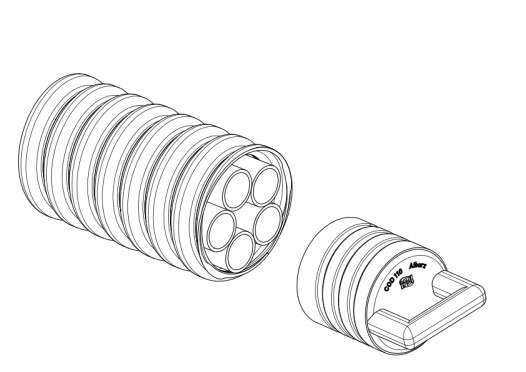
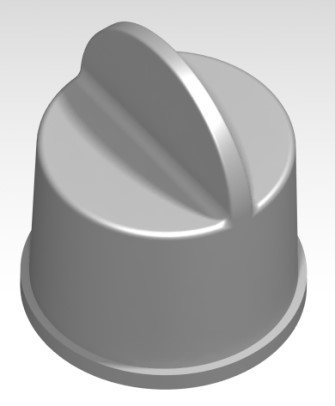
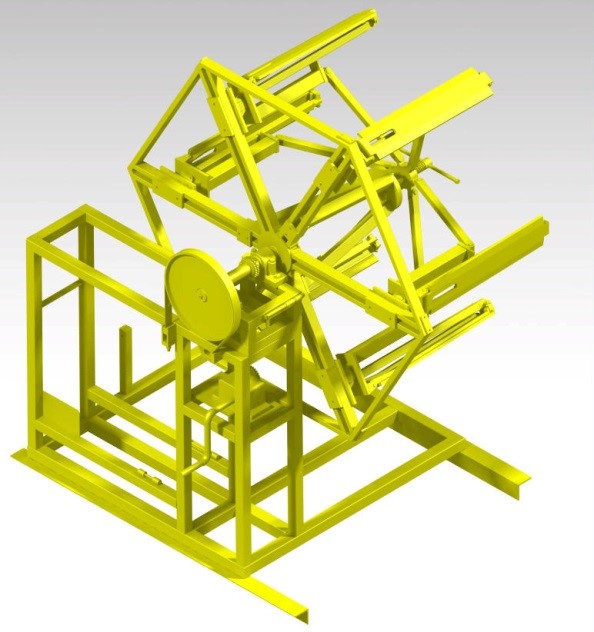
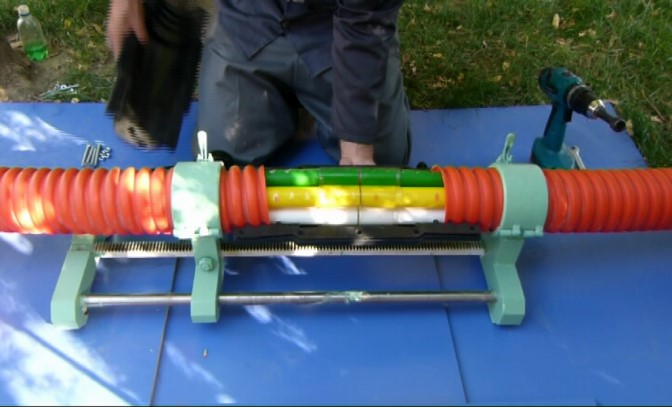
Executive Instruction for Ducting and Installation of C.O.D Pipes:
Polyethylene Corrugated Duct with Subduct (PE Corrugated Optical Ducts)
Definition of Ducting:
The operation that results in the construction of a duct and the installation of COD pipes with the relevant conditions and specifications for the passage, protection, and optimization of the transmission network is called ducting.
Review of the Drawing and Its Implementation at the Project Site:
Before any excavation work, based on the prepared execution details, the initial required information regarding other underground utilities along the excavation route in the mentioned area must be collected, and after review and the necessary requirements, the route marking (staking) shall be carried out.
Method for Calculating Excavation Depth / Bottom Width, Top Width, and Bedding Slope of the Duct:
If (N) is the number of ducts (the mentioned pipes) in one horizontal row, the bottom width of the duct for excavation is obtained from the following relation:
If we consider 11 centimeters as the distance between the centers of two mentioned pipes. (according to Figure 1)
70 cm + 12 cm (M-1) = Excavation depth (carriageway)

40 cm + 12 cm (M-1) = Excavation depth (sidewalk)
1/5 * h + bottom width = top width
Note: The values 70 and 40 are constant and are calculated respectively as the distance of the highest duct (the mentioned pipe) in the channel from the ground surface in the execution of the carriageway or sidewalk.
The excavation depth may change depending on the type of pipe used and its flexibility along the route when encountering obstacles.
Observance of Safety Points Before Execution:
Starting execution operations after coordination with the municipality and other urban service organizations, while observing all safety items such as the following, is mandatory:
Excavation and Earthwork:
Excavation and earthwork, depending on the height of underground obstacles and ground hardness, can be done in two ways.
a) Semi-automatic b) Automatic
Excavation and earthwork with a semi-automatic machine: After route marking (lining) of the ducting path, asphalt cutting is carried out with an asphalt cutter.
Earthwork in hard ground:
In such cases, it is necessary to use a compressor with the required number of hammers or a jackhammer, considering the trench width and depth. In excavating such grounds, it is not necessary to create a wall slope.
Earthwork in semi-hard and loose ground:
In such grounds, considering the excavation depth and obstacles ahead, a trencher with asphalt cutting and earthwork capability may be used, or traditional tools such as (shovel, pickaxe) or an excavator.
Note: In case of possible soil collapse during excavation (especially at depths greater than 60 centimeters), boards connected to the duct walls and, as far as possible, extending to the full depth of the duct must be used. To brace the duct walls, jacks or iron rods with T-shaped struts must be employed.
Encounter of the Duct Route with Obstacles:
Considering the flexibility and integrity of the mentioned pipes (COD), when the duct route encounters obstacles, two situations can be used:
a) Encounter at an intersection:
Given the flexibility of the mentioned polyethylene subducted COD pipes and their integral production, while maintaining the permissible excavation height and the height of the last pipe from the ground surface, if it is not possible to pass under the obstacles, move toward the surface and pour concrete with a height of 10 centimeters over it. (according to Figure 4)

b) Parallel crossing:
Routing the duct in parallel conditions is permitted with a one-meter clearance from main water pipes (trunk line) / gas / 64 kV high-voltage power cables, and the permissible clearance for sewage pipes and 20 kV power cables is half a meter; and if, in the aforementioned cases, observing the stated clearances is not possible, the method and type of execution will be determined on a case-by-case basis through review and expert assessment.
Method of Transporting / Storing Polyethylene Subducted COD Pipes:
Relevant accessories:


Note: The necessary forecasting and facilities to prevent possible hazards in the warehouse or at the product storage site are mandatory and essential.
Preparing the Duct Bed:
After leveling the duct bed (removing large and sharp stones), the entire duct must be covered with soft soil to a height of 5 cm. (soft, sieved soil collected on-site without debris and large, sharp stones may be used in the project)

Arrangement and Permissible Bending of Polyethylene Subducted COD Pipes:
The duct must be excavated so that the distance between the last pipe and the adjacent wall of the duct is at least 5 centimeters. The duct depth must be such that after placing the last pipe, the distance of the last terminator along the route to the sidewalk asphalt surface is 40 centimeters and in the carriageway is 70 centimeters.
The duct must be excavated so that the distance between the last pipe and the adjacent wall of the duct is at least 5 centimeters. The duct depth must be such that after placing the last pipe, the distance of the last terminator along the route to the asphalt surface in the sidewalk is 100 centimeters and in the carriageway is 120 centimeters.

Observing Manhole Spacing in Design Based on Pipe Bending, along with the COD Pipe Bending Table:
Since the manhole construction part in the transmission network entails significant costs, using 250-meter coils of polyethylene subducted COD pipes and a pipe joint can increase the distance between manholes from 250 meters to 500 meters, or even up to 1000 meters. As the mentioned pipes are produced in 250-meter coils and have very suitable flexibility and mechanical strength, they can be used at various angles and route changes in design.
a) Duct route length from the center of Manhole (1) to the center of Manhole (2) based on 250 meters in length.
(According to Figure 7)
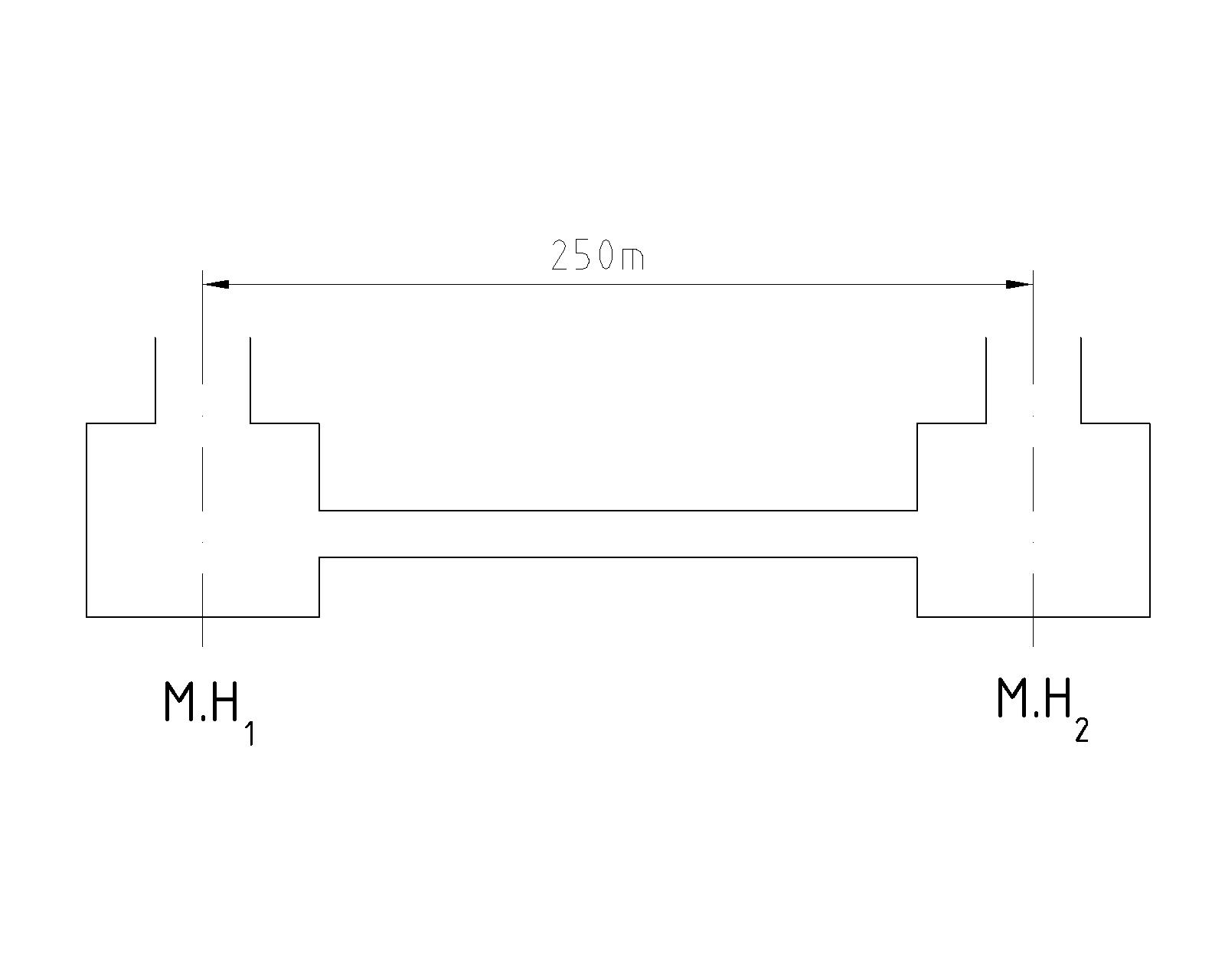
b) Duct route length from the center of Manhole (1) to the center of Manhole (3) with a distance of 500 meters, by eliminating Manhole (2) and replacing it with a (COD) pipe joint: (According to Figure 8)
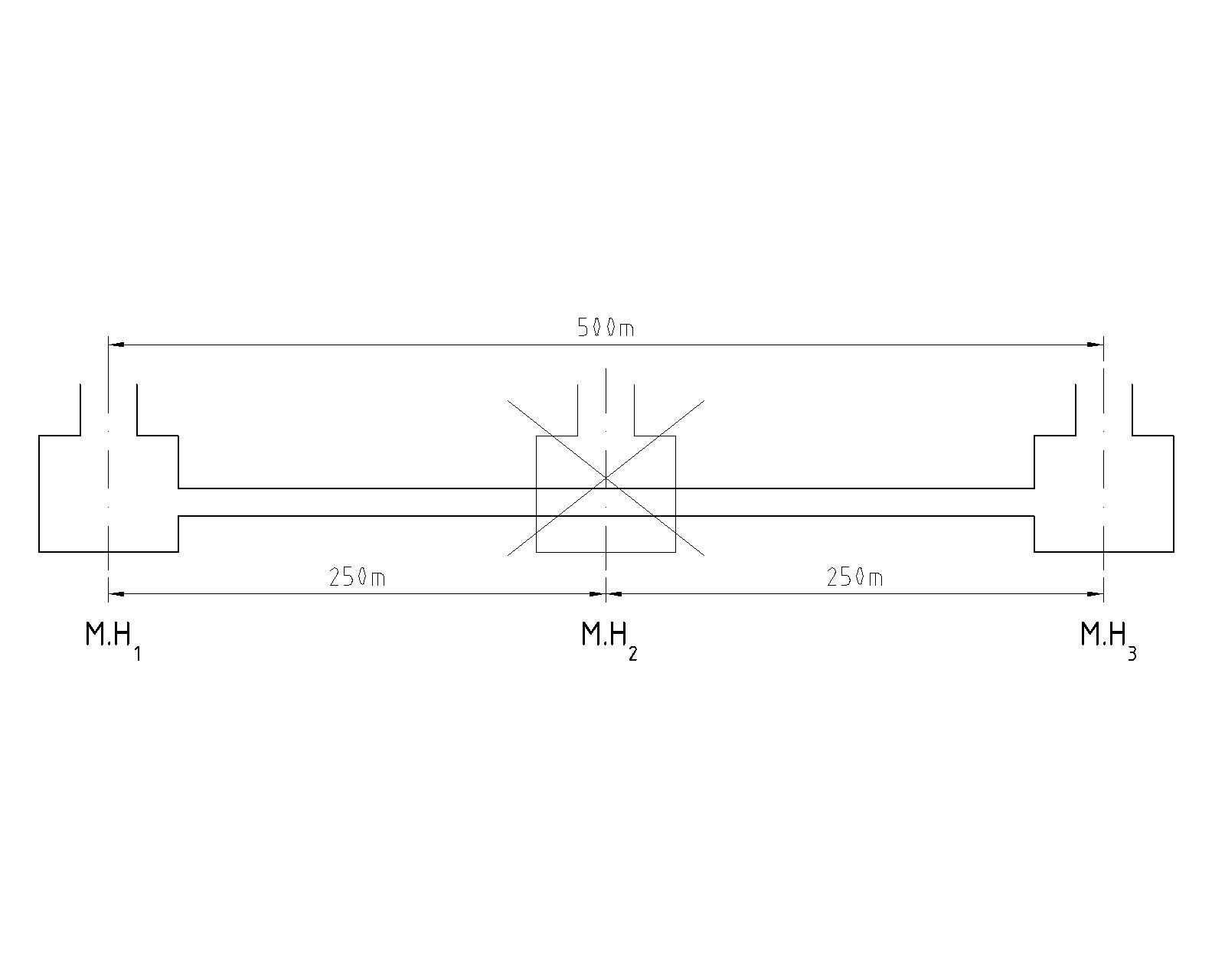
c) A bent duct route and/or repeated bends and/or bends with different angles:
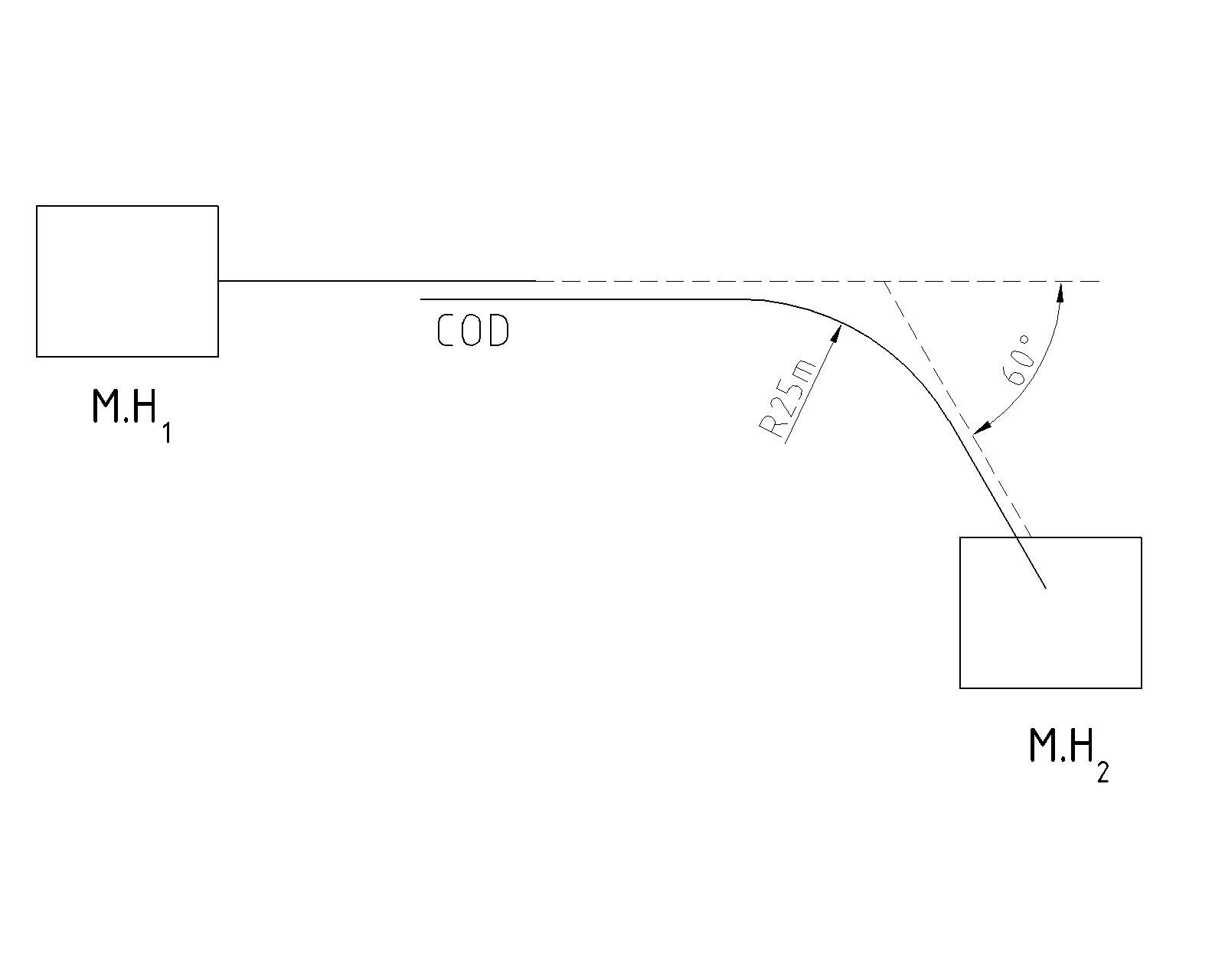

Bending Radius Determination Table:
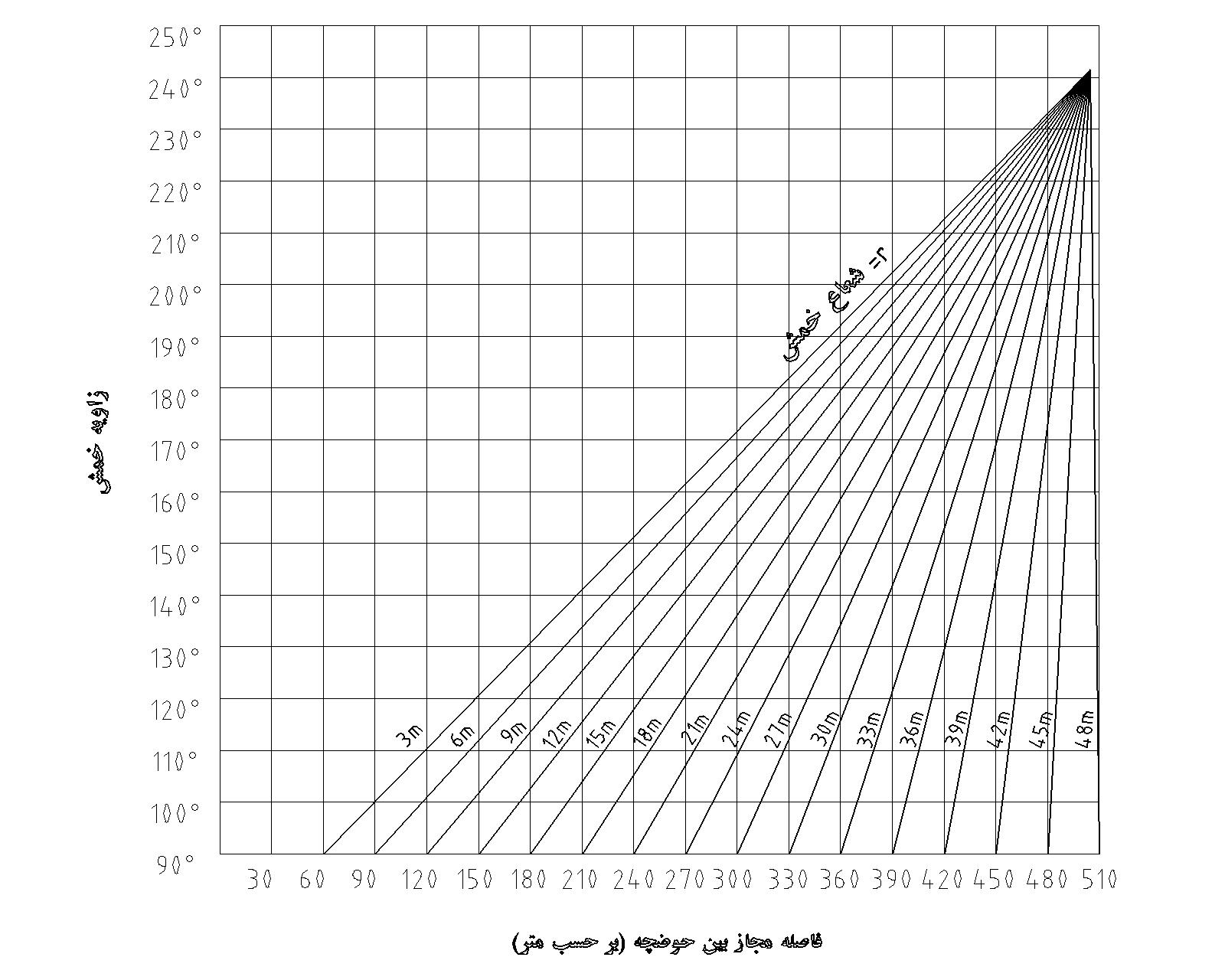
How to Select COD Pipe Length between 100×100×100 Inspection Chambers or Type 2 Manholes:
To estimate the pipe length between two 100×100×100 inspection chambers or a Type 2 manhole, based on the dimensions of the manhole and considering the length of the entry joint into the manhole (connector) and the thickness of its concrete wall, for installation to 100×100×100 inspection chambers at a 500-meter spacing, the pipe length should be calculated as 502 meters; and for installation to Type 2 manholes at a 500-meter spacing, the pipe length should be calculated as 505 meters.
Method of Laying Polyethylene Subducted COD Pipes in the Duct:
Pipe laying method:
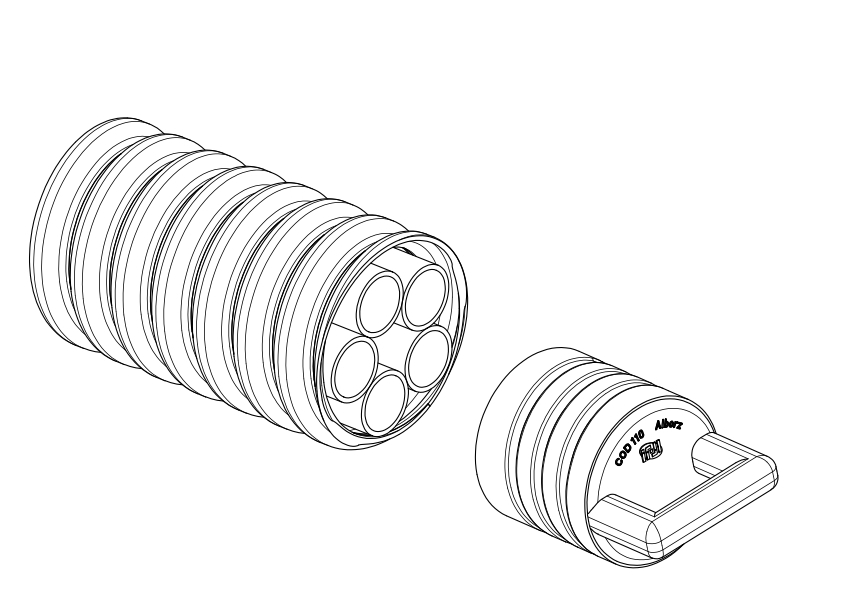
How to Connect Two 250-Meter Coils of COD Pipe to Each Other at a 500-Meter Distance:
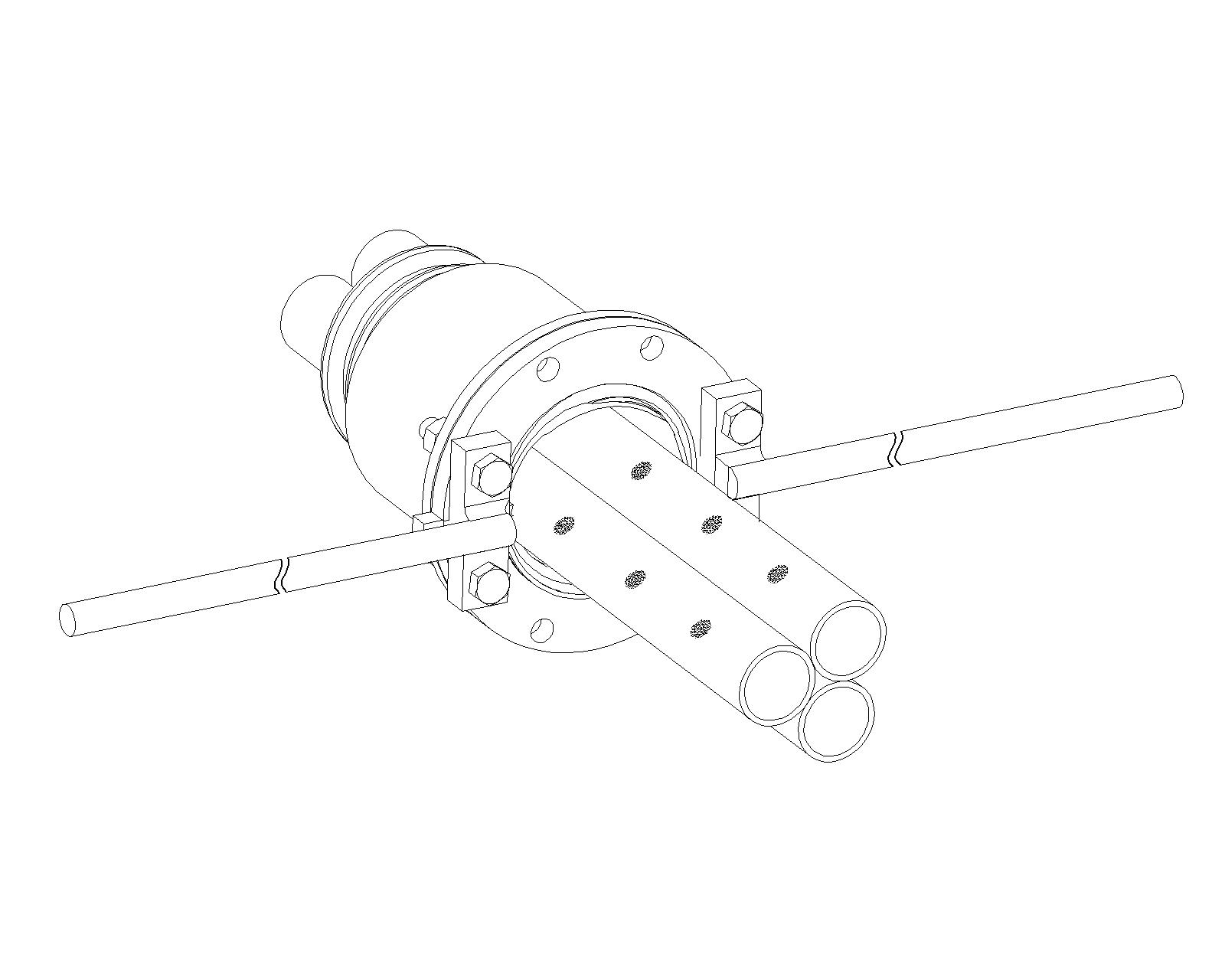
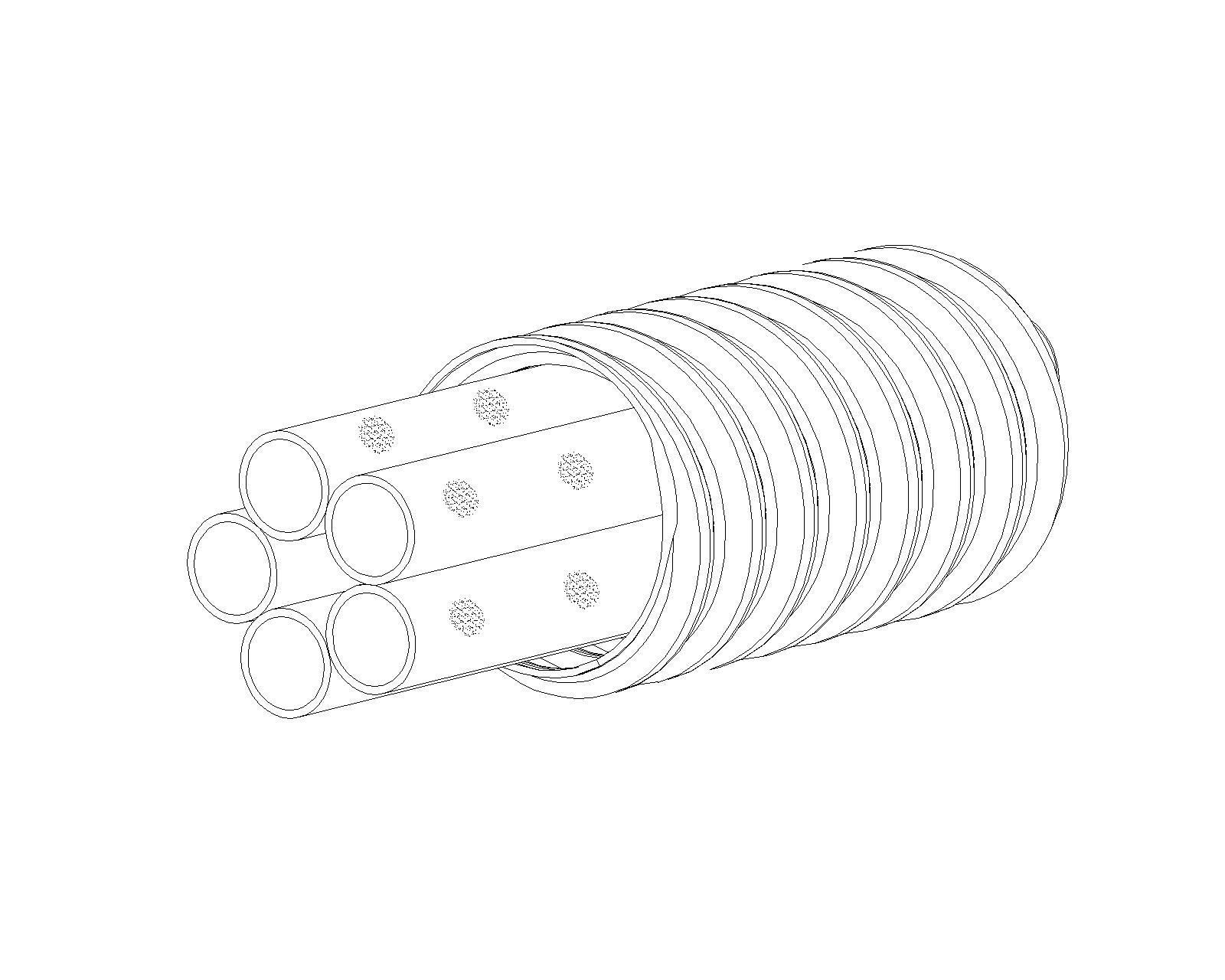
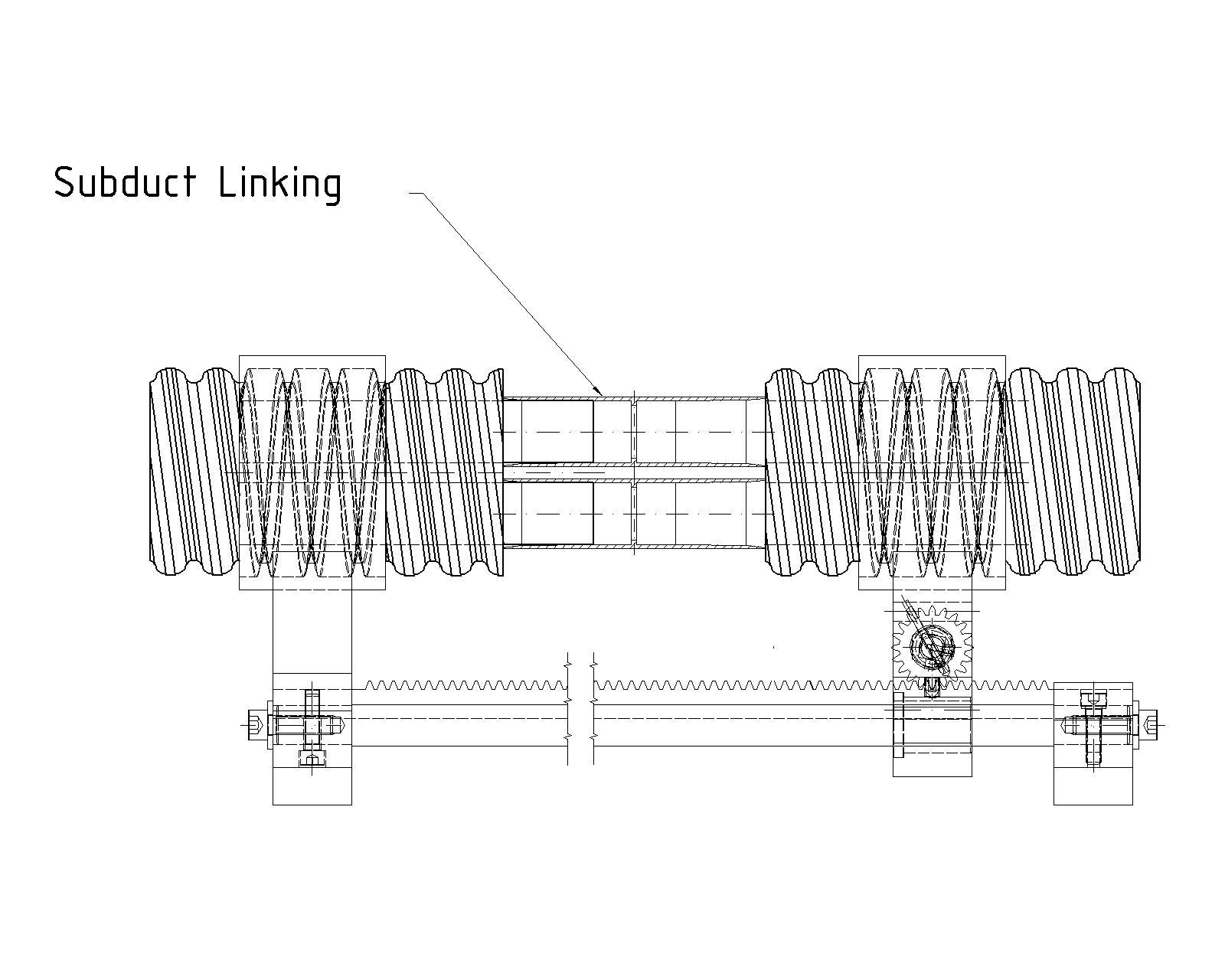
5. The colored subducts of the pipe must all be cut to the same length and be free of any sharp edges and burrs. (for seating in the glass sleeve)
6. The 110 joint consists of two pieces. Therefore, the two bodies of the 110 joint, by means of a rubber gasket, protect the glass sleeve area and are connected and sealed with bolts and nuts—observing the threads formed on the COD pipe and the 110 joint. (according to Figure 16)
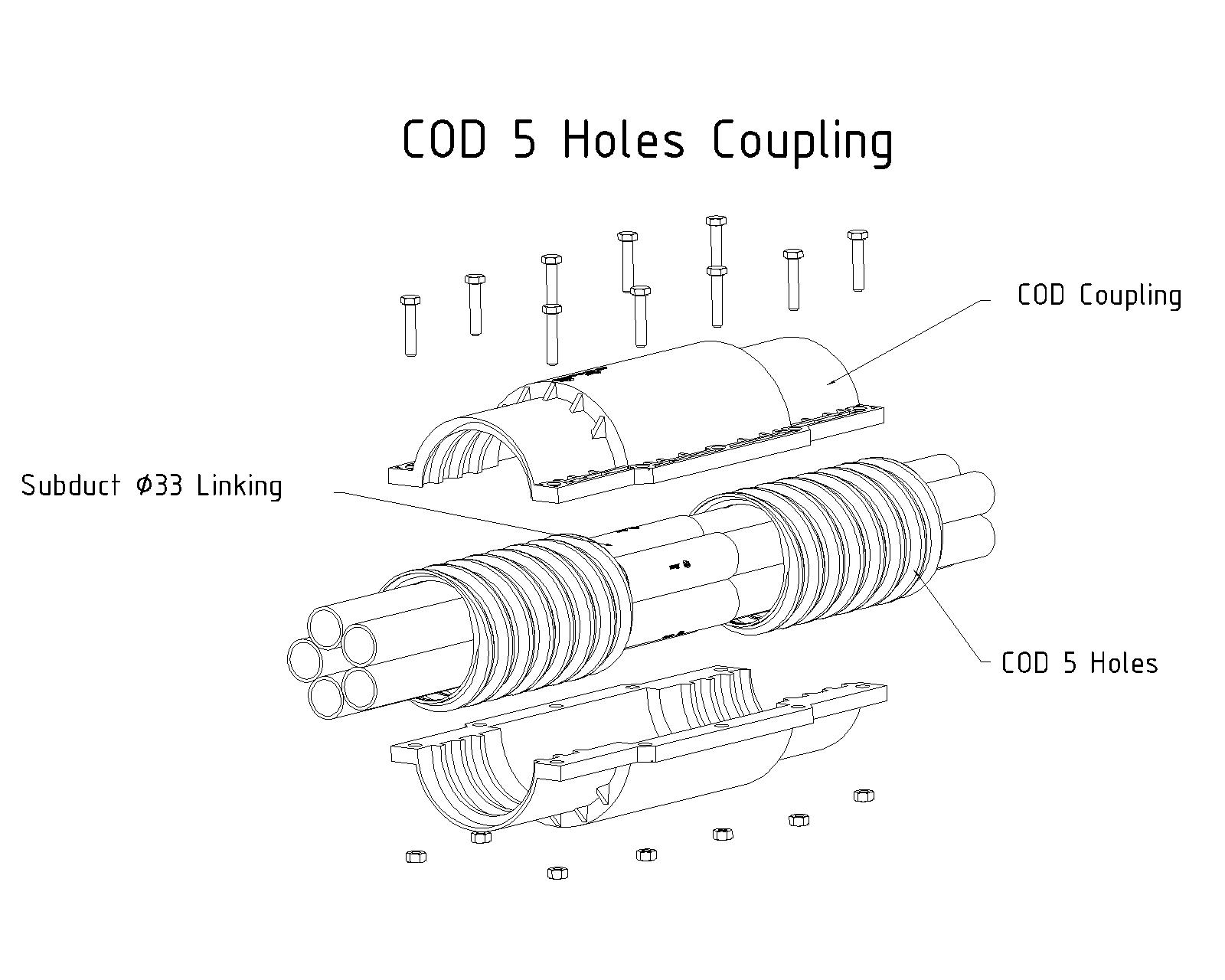
7. To connect the COD pipe to the inspection chamber or Type 2 manhole, a fitting called the manhole entry fitting (connector) is required. After installing the COD pipe inside the duct, the COD pipe cover is removed. The protrusions (fusion points of the subducts) are cleaned with a file, and then the installation steps of the connector are carried out as shown below. (Figure 17)
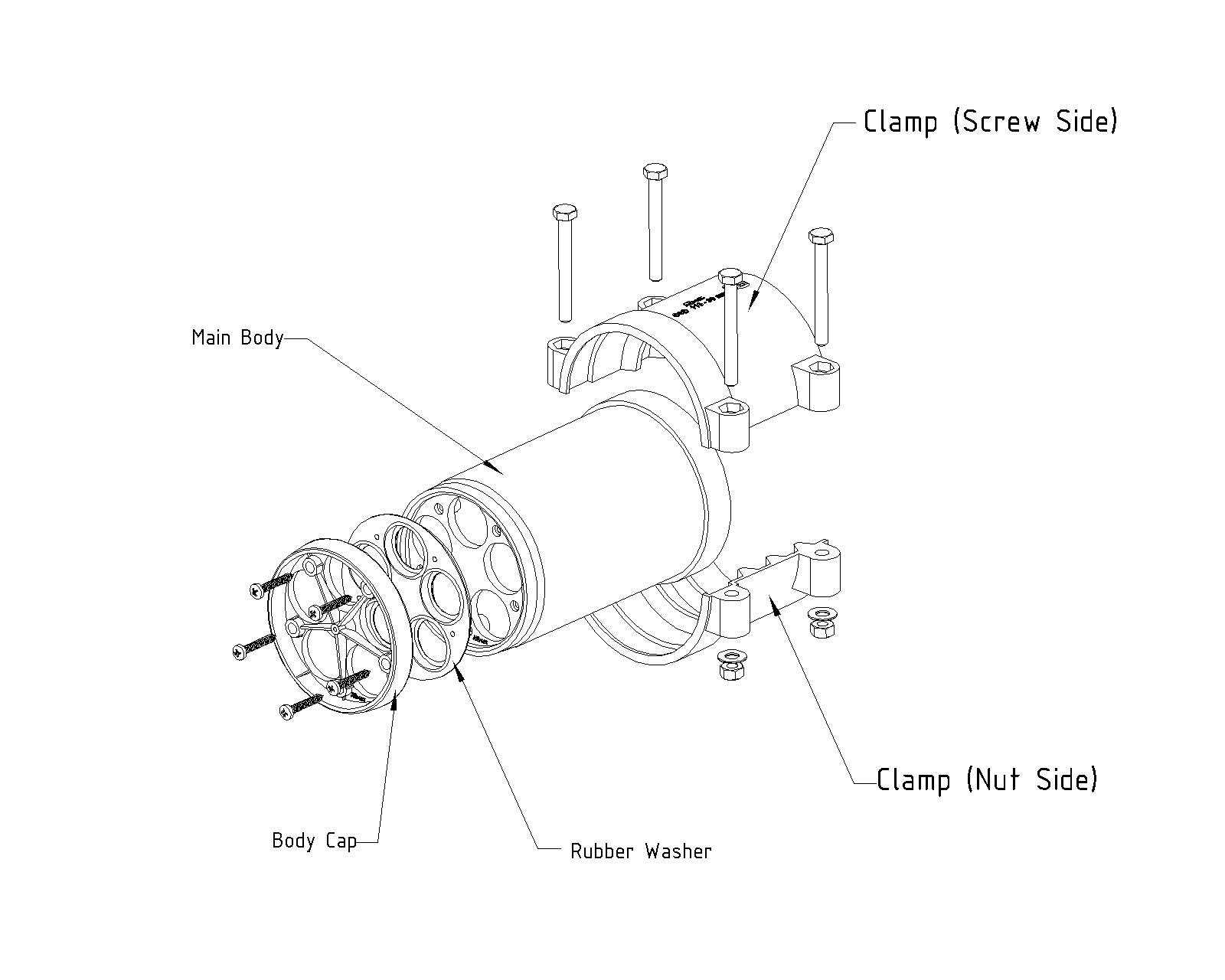
Note: The pipe length along the excavation route must be greater than the distance between the two manholes.
Method of Tapping (Branching) in COD Pipes:
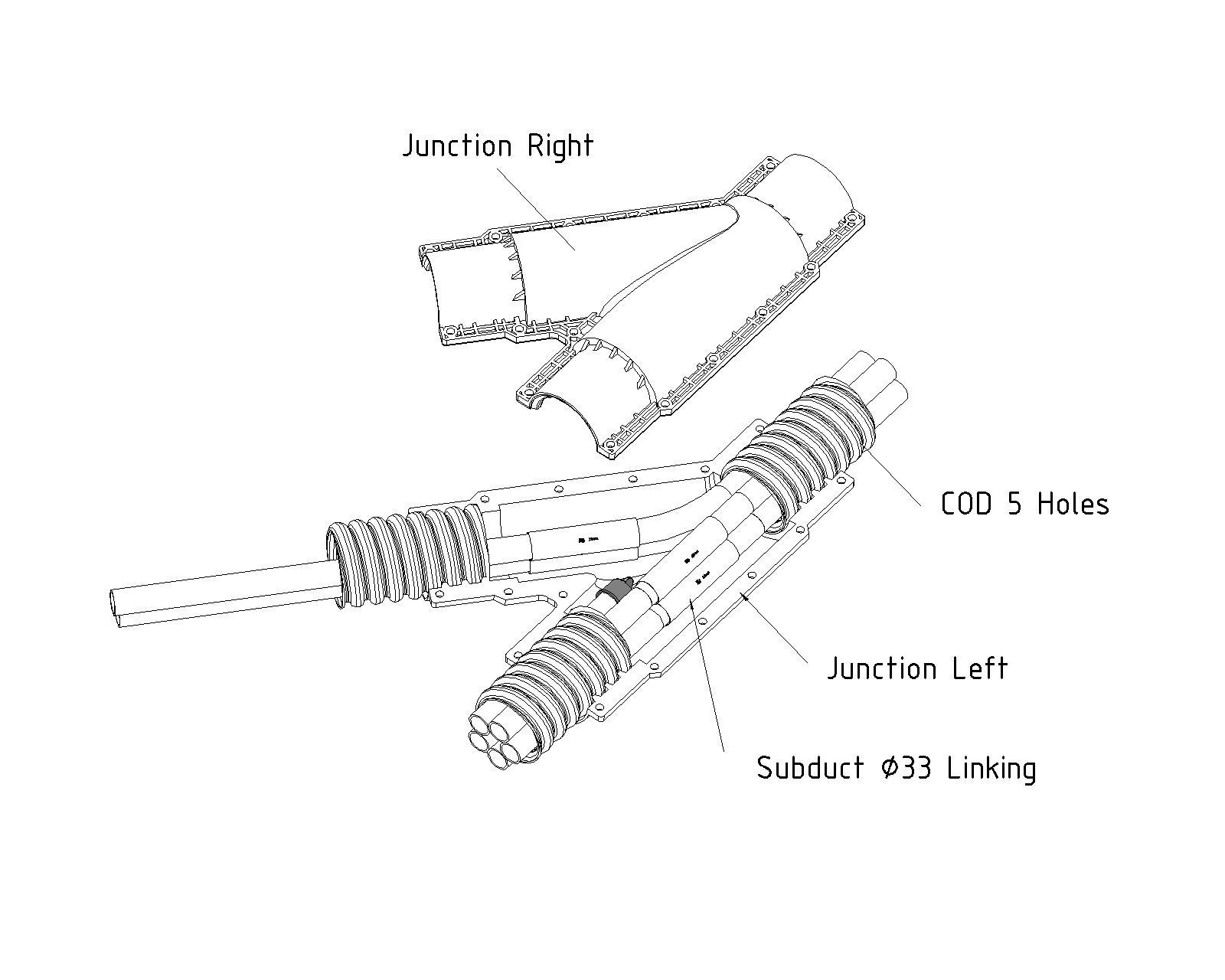
Use of Mechanical Protection:
In some cases during pipe laying, if the last row of pipes (considering the last hole of the manhole) has a laying height in the carriageway or sidewalk less than the elevation code announced in the execution instructions, mechanical protection shall be used. This protection includes pouring 10 centimeters of concrete with a grade of 200 over the last row of pipe laying.
It is evident that if the height of the last row of pipe laying is 30 centimeters, concrete with a grade of 250 or 300 shall be used, and furthermore, in other cases such as a weak duct bed / presence of effective chemicals / railway crossing / cable and riverbeds or qanats, necessary coordination with supervision and design units shall be made.
Backfilling, Soil Compaction, and Site Cleaning:
After backfilling (soft soil) over the last pipe, backfilling with 30% gradation (coarse debris larger than 10 centimeters) shall be carried out in moist layers by workers to a maximum layer height of 15 centimeters.
Over the stated route, compaction shall be done using a compactor in a back-and-forth manner (as specified in the referenced regulations and tests). After completing the above operations, proceed to clean the operation site 100%.
Proceed to clean the operation site 100%.
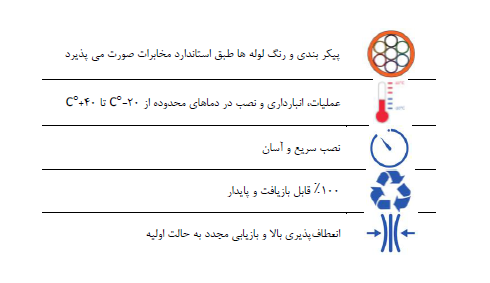
.

Contact Infromation
Tehran, 18th km of Fath Highway, Tiba Industrial Complex, Negarestan Street, No. 98
Phone Number : 02146079801 – 0214749
All material and intellectual rights of this website belong to Alborz Industrial Group.
Reviews
There are no reviews yet.